At first glance, I let out a heavy sigh. This was it? After travelling for almost 4 hours to reach the park, all I could see ahead was what appeared to be a dirty bobsled hill on a hot July day – when the alluring whiteness of winter snow becomes smeared with soil and is finally been exposed to the sun. Topping this up I had a crying baby wanting food because she was tired from travelling… our first impression of the famed Pamukkale was not one of excitement and enthusiasm, but of a little disappointment.

But what a difference a few steps can make…….:)
Just past the entrance and at the foot of the long, white path to the top, that which wasn’t visible from ground level finally came into view and induced the awe we had been waiting for. The best way to describe it when you see it for the first time is – numerous infinity pools all set up together that drop off to magnificent views of the town below.
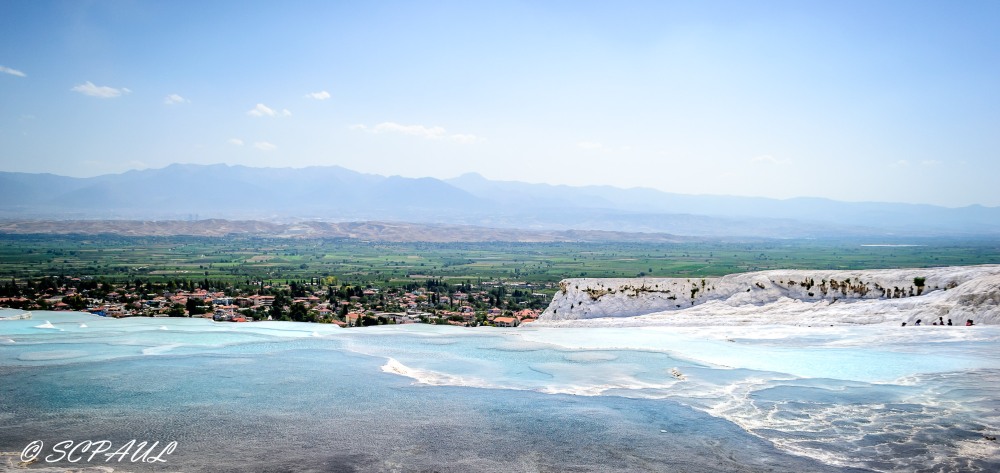
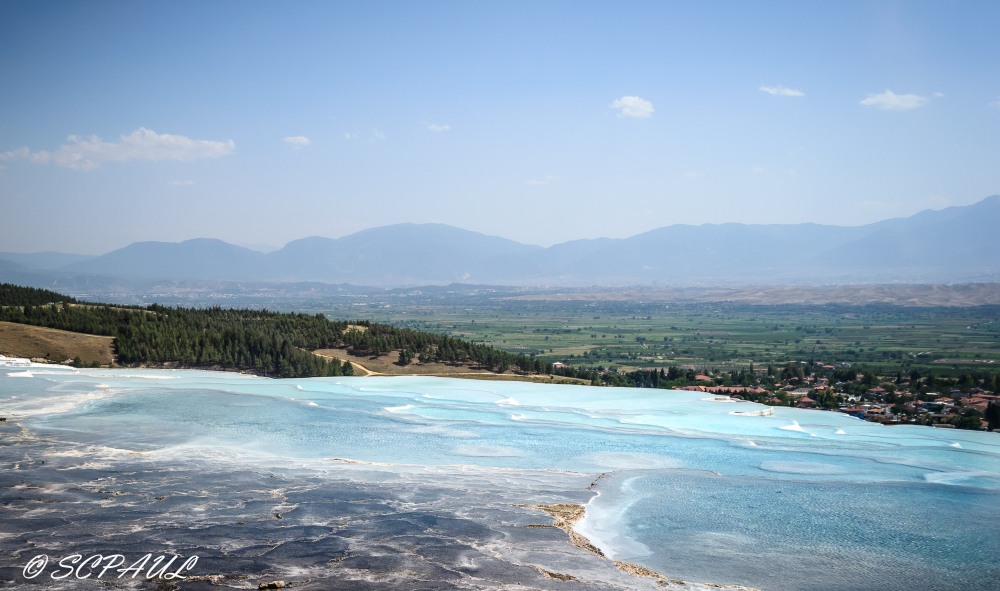

Pamukkale (which means “cotton castle” in Turkish) is a series of terraces (called “travertines“) created by highly concentrated limestone deposits from 17 hot water springs in the area. Since 200 BC people have flocked to the area believing the pools to have healing properties. Romans used it as a spa centre because of the hot springs.
After walking along a winding path towards the edge of the mountain you will come to the first set of travertines. Now this is where it is important to not freak out. We were quite shocked with the first look at all of the pools on site!! They were empty. Bone dry. On asking our tour guide he quickly pointed further down the footpath and after 10 minutes of walking the sound of rushing water became louder and the crowd started to divulge itself tucked under the top of the mountain. As it turns out there are a group of larger reinforced pools that are kept full for tourists to swim in. These are much larger than the natural pools but still have the same spring water and calcium deposits built up on the sides.
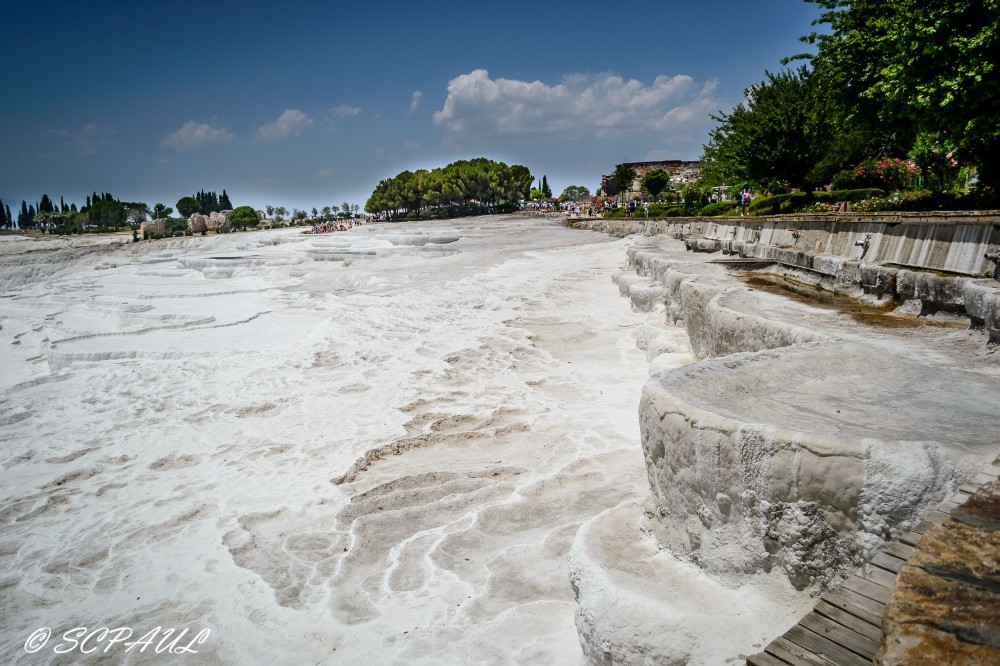

Being one of the oldest tourist attractions in the world tourists haven’t stopped paying their respects and disrespects too. Pamukkale’s glory is slowly declining with every tour bus that unloads its passengers here. The pools themselves have become restricted, to protect them, while much of the water has been diverted to form unnatural travertines for you to walk past with more ease on the way up the cliff. Pamukkale lost most of its natural beauty in 1960’s when hotels sprung up around the area. The hotels drained the thermal waters to fill their swimming pools and the terraces turned a greyish brown. Thankfully, in 1988, UNESCO stepped in and declared Pamukkale a World Heritage Site. The hotels were demolished and a series of artificial pools built atop the road to hide the damage caused. Today, there are strict controls on development and tourism in the area, allowing you to visit in good conscience.
We slowly entered the travertines and started walking. Shoes are not allowed when walking through the travertines to prevent damage. We probably spent an hour swimming and walking through the pools. The landscape was certainly out of this world and every step revealed a new series of patterns and pools. I loved the fact that although the water was quite warm but still refreshing compared to the scorching sun.
As if the cotton castle mountain weren’t cool enough, there is another fabulous element to Pamukkale: ancient Greek ruins of the city of Hierapolis that date back to over 2,300 years ago — sit at the top of the hill! Hierapolis – a Spa town was built above Pamukkale to take advantage of the natural mineral water and hot springs.
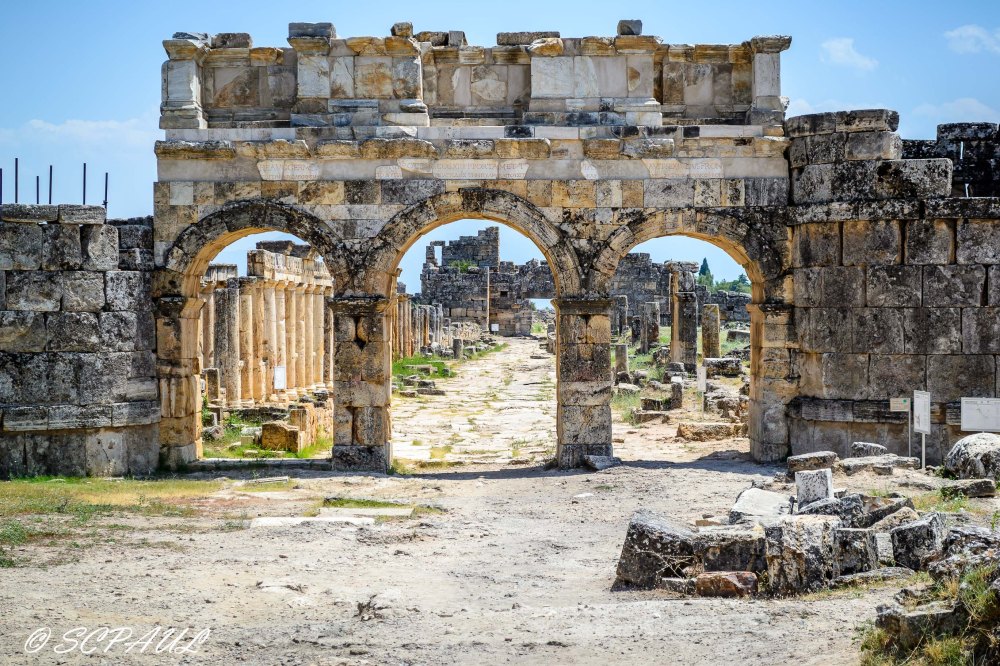
The city later expanded and became a healing center for doctors to treat patients, before becoming part of the Roman province of Asia. The parts of Hierapolis that can be explored include an archaeological museum, Roman theater, Roman tombs, the Temple of Apollo and the Arch of Domitian. They are quite spread out so allow at least an hour to see them all. If the weather is warm it is recommended hiring a scooter. My favourite site apart from the terrace pools was the Roman theater which is thought to have been constructed in the year 60 AD.
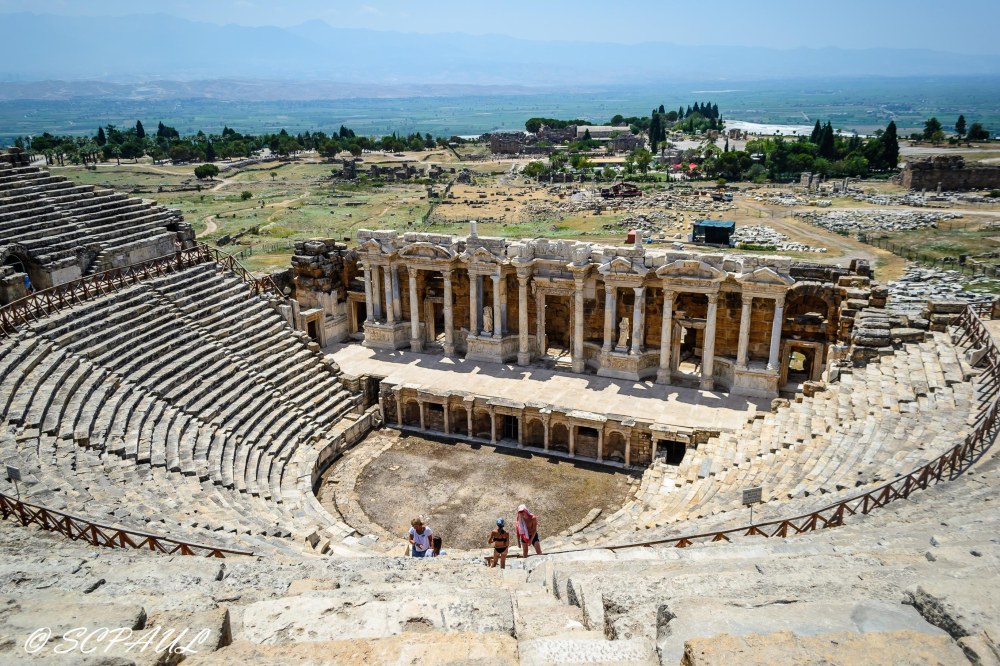
Exploring the rippling landscape is thirsty work and thankfully there’s a restaurant just above the pools for drinks and ice-cream. You can also find here the popular Cleopatra’s bath. This antique pool remains from Roman times when the mineral water was used for its healing properties. This is a large pool where you can swim among Roman columns and other ruins that had collapsed into this hot spring during an earthquake in the 7th century. The water in the thermal pool at Cleopatra’s Bath is 36C°. There is a mixture of various minerals such as bicarbonate, sulfate, carbon dioxide, iron etc. A swim in the pool will set you back TL32 for an adult which is quite pricey.

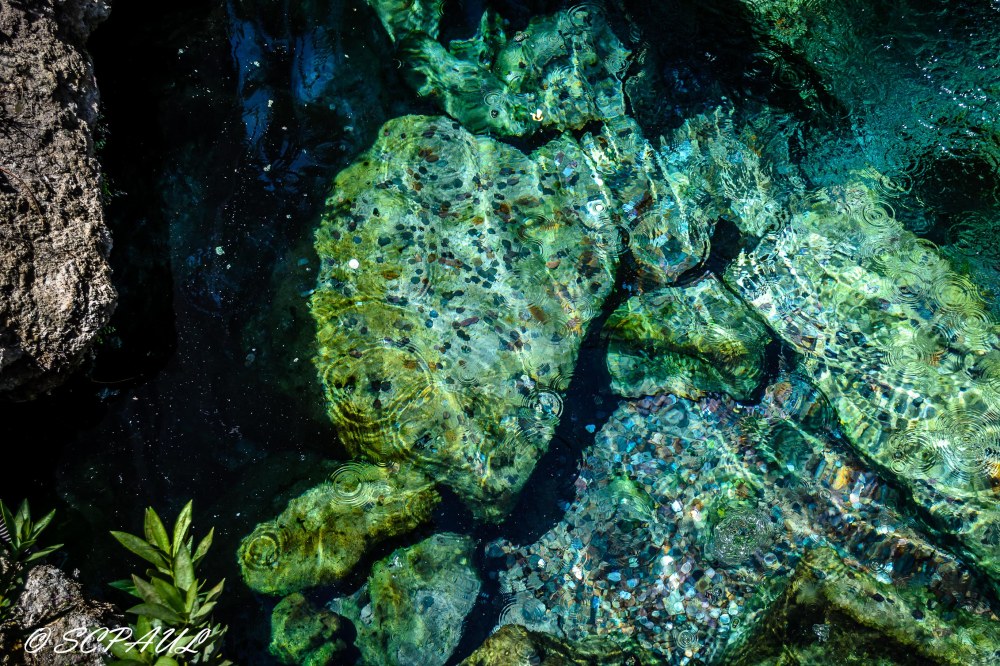
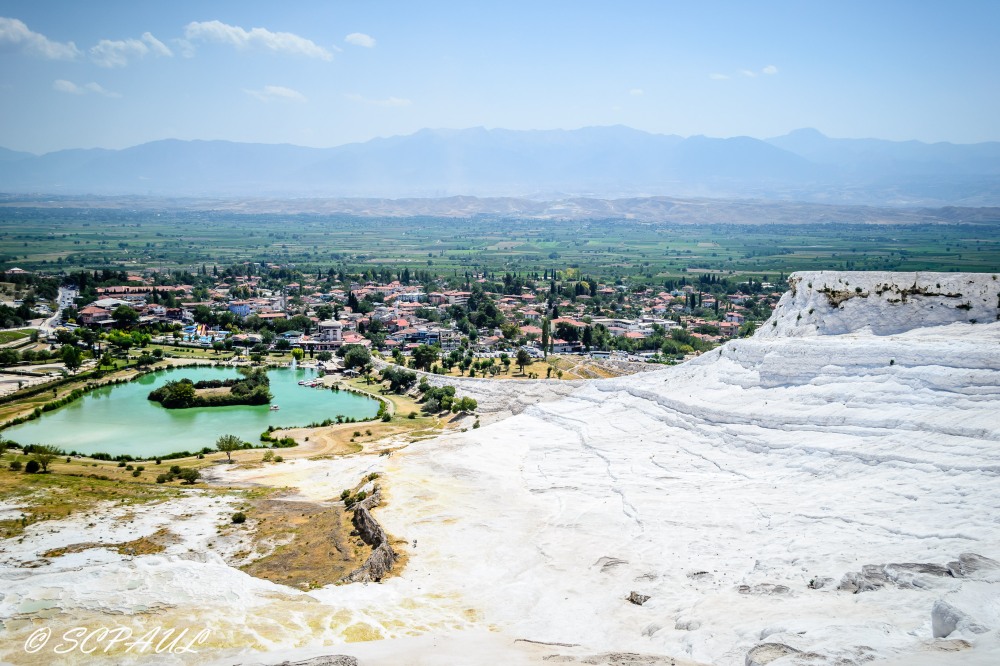
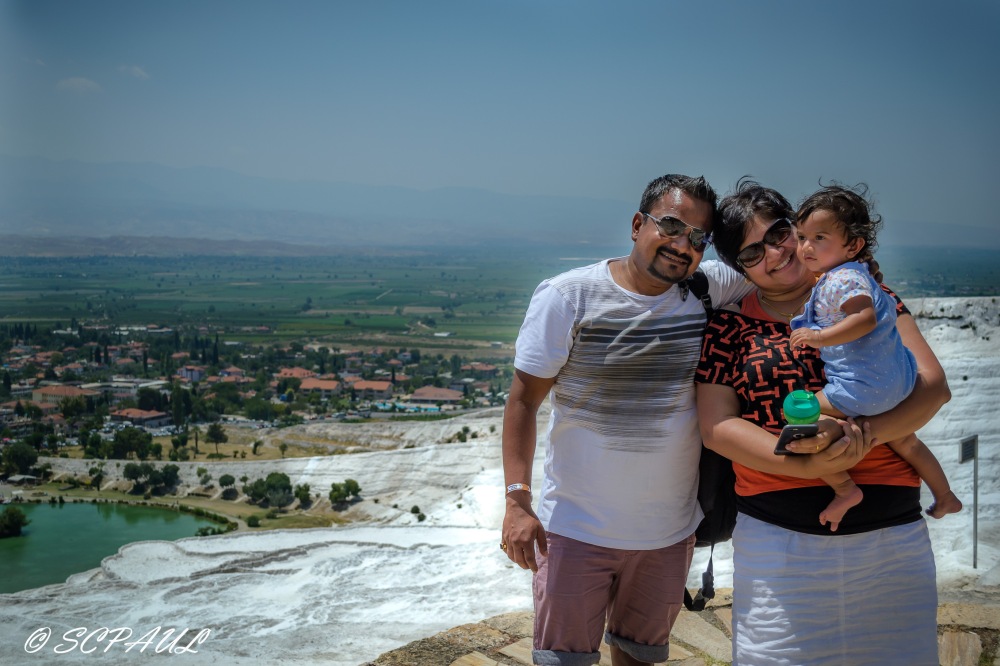
IMPORTANT FACTS
- Getting to Pamukkale – It is very easy to drive into Pamukkale from most parts of country. Alternatively you could fly in to Denzili Airport and hire a car. Buses are also very good in Turkey and you can travel the entire country quite cheaply and in comfort.
- Entrance Ticket – Entrance to Pamukkale is 35TL (excluding the Cleopatra’s pool for which you have to pay separately) and the opening hours are April 15 till October 2 – Open from 08:00 to 21:00 every day and from October 3 till April 14 – Open from 08:30 to 17:00 every day.
Despite being blighted by the pitfalls of mass tourism, Pamukkale and Hierapolis is definitely a good place to visit while in Turkey, simply because it is a natural, beautiful landmark and also has a rich history of its ancient past hidden behind its ruins.











The landscapes of Pamukkale are indeed unique in the world. It was interesting to read about your experience and how you felt let down initially, but the beauty of the place later swept you off your feet. This is one place we would love to visit and hope to do so
LikeLike
It is definitely worth visiting once 🙂
LikeLike
Pamukkale is a unique and beautiful feature in the world, I visited there many years ago but I still remember what it was like when I was walking on the rocks – not cotton-y at all. Overloading tourism and erosion had me worried about this natural treasure, I hope it is well-preserved. @ knycx.journeying
LikeLike
I know 🙂 Specially when you try to walk on the rocks in the hot summer it is a nightmare 😀
LikeLiked by 1 person
While I have been to Turkey, I have not been to Pamukkale. It looks like a beautiful place. It would probably be peaceful too if not for the tourists, but I guess that is the case for most places. Is it easy to get to?
LikeLike
If you are in Western Turkey like Izmir it is very easy to get too and but from other places it could be a few hours drive. We drove from Antalaya 🙂
LikeLiked by 1 person